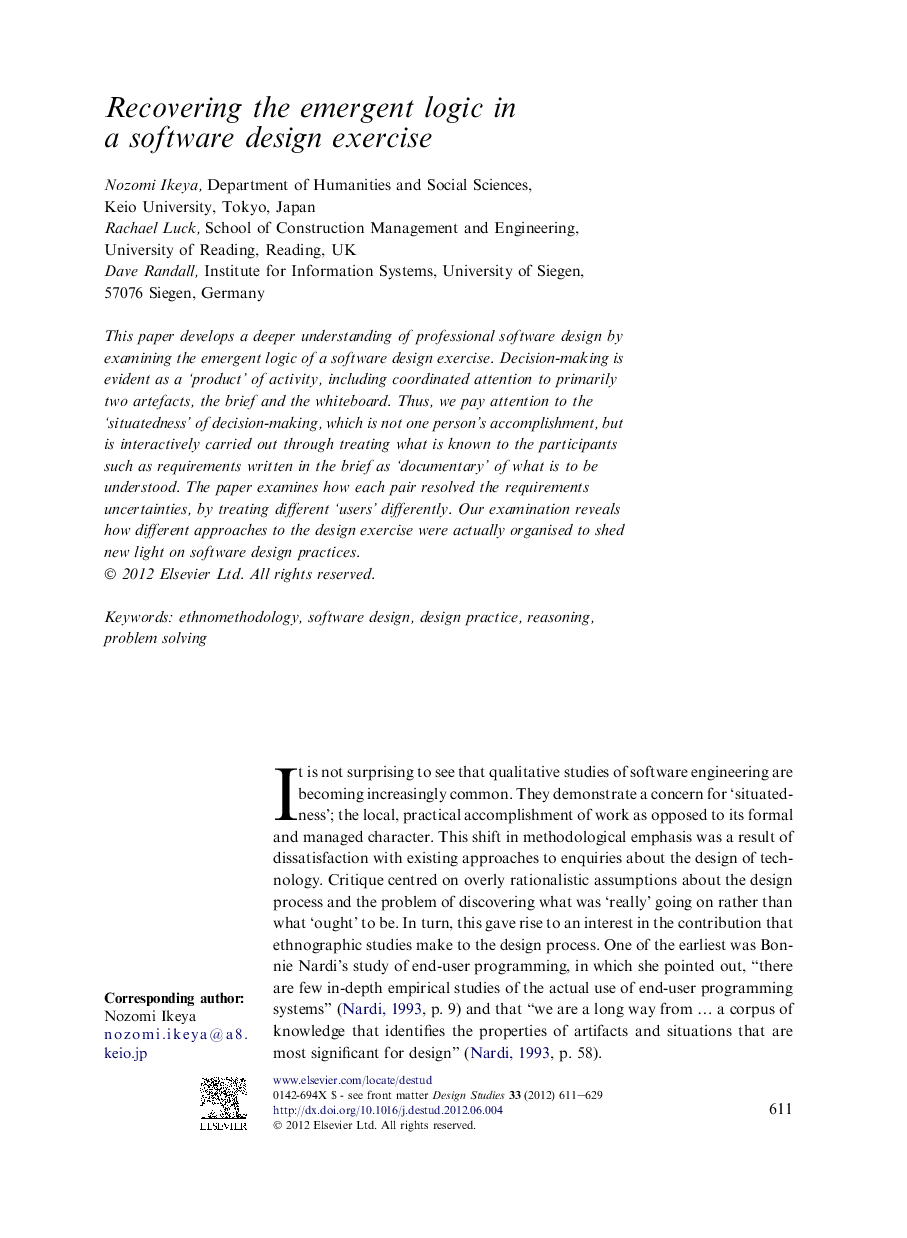| Article ID | Journal | Published Year | Pages | File Type |
|---|---|---|---|---|
| 261528 | Design Studies | 2012 | 19 Pages |
This paper develops a deeper understanding of professional software design by examining the emergent logic of a software design exercise. Decision-making is evident as a ‘product’ of activity, including coordinated attention to primarily two artefacts, the brief and the whiteboard. Thus, we pay attention to the ‘situatedness’ of decision-making, which is not one person’s accomplishment, but is interactively carried out through treating what is known to the participants such as requirements written in the brief as ‘documentary’ of what is to be understood. The paper examines how each pair resolved the requirements uncertainties, by treating different ‘users’ differently. Our examination reveals how different approaches to the design exercise were actually organised to shed new light on software design practices.
► Demonstrates the emergent logic of software design with participants’ documentary methods. ► Decision-making is a ‘product’ of activity, not one person’s accomplishment. ► Requirements ambiguities are resolved orientating to different ‘users’. ► Designers are oriented towards next stage in design process, not only to software in use. ► Whiteboard is important in ‘highlighting’ work, less helpful to record decisions.
